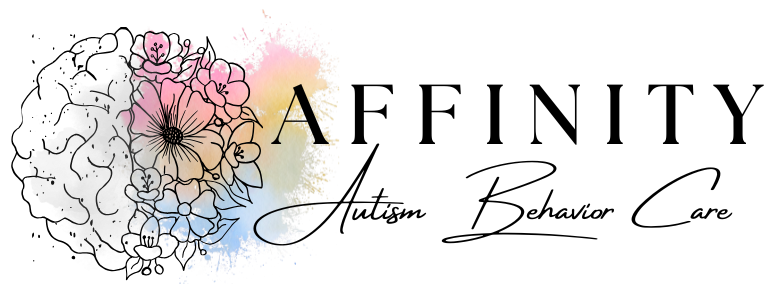What is Shaping in ABA? Essential Guide to Transformation
Watching a child struggle with everyday tasks that most people take for granted can be heartbreaking for parents and caregivers. Whether it’s communicating basic needs, engaging in social interactions, or performing self-care routines, these challenges can feel insurmountable. Yet with the right approach, even the most complex skills can be broken down into achievable steps that build toward success. This is where shaping in ABA therapy becomes a powerful tool for growth and development.
Shaping in ABA therapy is a systematic technique that teaches new behaviors by reinforcing successive approximations, small steps that gradually get closer to the desired behavior. Rather than expecting immediate mastery of complex skills, this approach recognizes that meaningful learning occurs incrementally, celebrating progress at each step along the way.
Understanding the Science Behind Shaping
Behavioral Foundations of Shaping
The concept of shaping was pioneered by psychologist B.F. Skinner demonstrated that complex behaviors could be taught through reinforcing successive approximations. This foundational principle of operant conditioning remains at the heart of Applied Behavior Analysis therapy today. The shaping process is a powerful tool that enables ABA practitioners to gradually build new skills in manageable steps.
Research supporting the effectiveness of shaping is substantial. Studies have consistently shown that shaping procedures produce significant skill improvements across various populations and behaviors, particularly for individuals with autism spectrum disorder.
The effectiveness of shaping has a neurological basis as well. When we reinforce behaviors, we strengthen neural pathways associated with those behaviors. By systematically reinforcing closer approximations to a target behavior, we help create and strengthen new neural connections that support skill development.
When and Why Shaping Works
Shaping is particularly effective in situations where the desired behavior rarely occurs naturally, the skill is complex and needs to be broken into smaller components, traditional teaching methods haven’t been successful, or building confidence through small successes is beneficial.
For individuals with autism spectrum disorder, shaping offers several key benefits: it reduces frustration by creating achievable steps, allows children to learn at their own pace, provides frequent positive reinforcement, builds confidence through ongoing success, and creates a foundation for tackling more challenging tasks. Implementing shaping procedures effectively can transform challenging behaviors into opportunities for skill development.
The Shaping Process: A Step-by-Step Guide
Identifying Target Behaviors
The first step in effective shaping is selecting appropriate target behaviors that are socially significant, observable and measurable, developmentally appropriate, and functional in the natural environment. Task analysis is crucial when identifying specific behaviors that will benefit the child’s development.
Creating a Shaping Plan
With a target behavior identified, the next step is breaking it down into manageable components. Successive approximations are the incremental steps that gradually lead to the desired outcome. Shaping behavior involves breaking complex tasks into smaller, achievable steps that the child can master.
Implementation Strategies
Effective implementation of shaping procedures requires thoughtful consideration of reinforcement strategies. Differential reinforcement plays a crucial role as therapists work toward reinforcing closer approximations to the desired behavior. The reinforcer should be highly motivating for the individual, such as preferred activities or verbal praise, immediately delivered following the target approximation, consistently applied, and gradually faded as the new behavior becomes established.
Shaping vs. Chaining: Understanding Key Differences
Differentiation Between Techniques
While both shaping and chaining break down complex behaviors, they serve different purposes in skill development:
| Characteristic |
Shaping |
Chaining |
| Focus |
Developing a single behavior |
Teaching a sequence of behaviors |
| Process |
Reinforcing closer approximations |
Teaching discrete steps in sequence |
| Example Goal |
Saying “hello” |
Completing morning routine |
| Measurement |
Quality/accuracy of behavior |
Completion of sequence |
| Best For |
Refining performance |
Multi-step tasks |
ABA shaping focuses on how well a single behavior is performed, gradually improving its form, duration, or intensity through a systematic approach. In contrast, chaining addresses sequential steps that must occur in a specific order to complete complex actions successfully.
Types of Chaining and Their Applications
There are three primary approaches to chaining in ABA therapy:
Forward Chaining begins by teaching the first step in a sequence, then gradually increasing complexity by adding subsequent steps one by one. This step-by-step guide works best when early steps in the sequence (like beginning the process of brushing teeth) are easier or when building momentum is important for the child to continue progressing.
Backward Chaining starts with the final step in a sequence and gradually works backward. This approach works best when completing the final step provides natural reinforcement.
Total Task Chaining teaches the entire sequence during each session, with prompting as needed. This works best when the learner already has some familiarity with components.
Practical Applications Across Environments
Home Implementation
Parents and caregivers can effectively implement shaping techniques at home, creating consistency between therapy sessions and daily life.
Materials helpful for home implementation include visual supports like pictures, schedules, and timers; reinforcement tools such as token boards and sticker charts; data collection sheets; and communication devices if applicable.
School and Community Settings
Effective implementation across environments requires coordination between therapists, educators, and other care providers through regular team meetings, shared data collection systems, consistent reinforcement strategies, and clear communication.
Most state education departments support coordinated services through Individualized Education Programs (IEPs) that can incorporate ABA methodologies like shaping. School based behavior technicians can collaborate with classroom teachers to implement consistent approaches.
Age and Developmental Considerations
Early Childhood (2-5 years) For young children, focus on foundational communication and self-help skills. Use more tangible, immediate reinforcers. Incorporate play-based approaches and keep sessions shorter with frequent reinforcement.
School Age (6-12 years) With school-age children, target academic skills and social skills. Use more natural reinforcers and increase the complexity of shaped behaviors through academic tasks. Involve peers in social skill development and begin teaching self-monitoring skills as the child masters existing behaviors.
Adolescence and Beyond (13+ years) For adolescents focus on independence and vocational skills. Shift toward natural reinforcement and teach self-management of shaping programs. Address age-appropriate social behaviors and consider long-term transition planning.
Measuring Success in Shaping Programs
Effective shaping relies on detailed data collection to guide decision-making. Common methods include frequency measures (counting how often a behavior occurs), duration measures (tracking how long a behavior lasts), and quality measures (rating how well a behavior is performed).
Technology tools have made data collection more accessible. Various ABA data collection apps allow for mobile tracking, automatic graphing, and sharing of data among team members.
Most shaping programs show some progress within 2-4 weeks of consistent implementation, though mastery of complex skills may take months. Success indicators include consistency across settings, performance without prompting, maintenance over time, and generalization to novel situations.
Conclusion
Shaping in ABA therapy offers a powerful, evidence-based approach to teaching new skills and behaviors. By breaking down complex tasks into manageable steps and providing positive reinforcement along the way, this powerful motivator creates a pathway to success for individuals with autism and related disorders. Behavior shaping can be particularly effective for problem behavior by replacing it with more appropriate responses. The key to effective implementation lies in careful planning, consistent application, and ongoing monitoring. Whether you’re a parent looking to support your child’s development at home or collaborating with professionals across various settings, understanding the principles and practices of shaping and other ABA techniques can significantly enhance learning outcomes.
Ready to explore ABA therapy options? Affinity ABC is a compassionate team that offers in-home, school-based, and community-based services designed to promote independence, confidence, and quality of life. Contact us today at (505) 584-2634 or email admin@affinityabc.com to schedule a consultation.
FAQs
What is shaping in simple terms?
Shaping in simple terms is a teaching method where we reward small steps toward a desired behavior instead of waiting for the perfect final behavior. It’s like teaching someone to ride a bike by first rewarding them for sitting on the bike, then for pushing with their feet, then for pedaling with help, and finally for riding independently.
What is shaping in ABA examples?
Shaping in ABA can be seen in numerous everyday examples. For instance, when teaching a non-verbal child to request items, a therapist might first reinforce any vocalization, then only sounds that approximate the word “more,” then only the word “more,” and finally a complete phrase like “I want more please.”
What is the shaping technique?
The shaping technique is a powerful technique used in ABA therapy to teach new behaviors by reinforcing successive approximations toward a target behavior. It involves first identifying a specific goal behavior, and then breaking it down into smaller steps. When applying shaping techniques, therapists might use physical guidance or gestural cues initially. The therapist starts by reinforcing behaviors that vaguely resemble the target, then gradually becomes more selective, only reinforcing behaviors that more closely match the final goal.
What’s the difference between chaining and shaping?
The difference between chaining and shaping centers on their fundamental purposes and implementation. Shaping focuses on developing or improving a single behavior by gradually reinforcing closer approximations to the desired form, frequency, or duration of that behavior. In contrast, chaining teaches a sequence of discrete behaviors that must be performed in a specific order to complete a task. Shaping targets quality improvement of behavior, whereas chaining addresses the order and completion of multiple behaviors.









